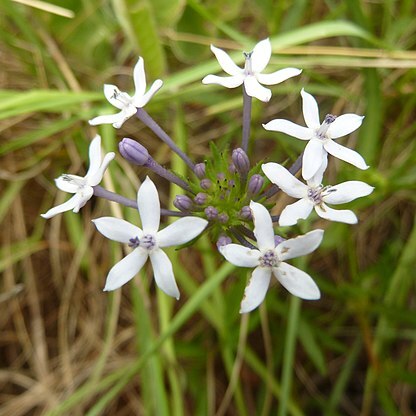Flowers mostly blue, small to medium-sized, hermaphrodite, dimorphic, some flowers with anthers included and style exserted and others completely vice versa, usually in few-to many-flowered terminal capitate inflorescences, frequently becoming more elongate in fruit, often spicate.
Corolla tube narrowly cylindrical, with an apical cylindrical dilation in long-styled flowers but narrowly funnel-shaped in short-styled flowers; lobes mostly 5, ovate to oblong; throat densely hairy.
Ovary 2–5-locular, each locule with 1 pendulous ovule attached close to the apex; style filiform, the stigmas divided into 2–5 filiform lobes corresponding with the number of locules in the ovary.
Leaves variable, small to moderate, linear to round, paired or rarely in whorls of 3, sessile or shortly petiolate; stipules with base connate with the petiole, apically fimbriate.
Fruit dry, globular, slightly lobed, ovoid or compressed obcordate, indehiscent or tardily dehiscent into mericarps, or subglobose and rather succulent.
Calyx tube ovoid or ± rectangular; lobes mostly 5, 1–3 enlarged and often foliaceous, the rest small or even obsolete.
Perennial herbs or subshrubs, with glabrous or hairy, erect, procumbent or decumbent stems.
Seeds small, compressed.

